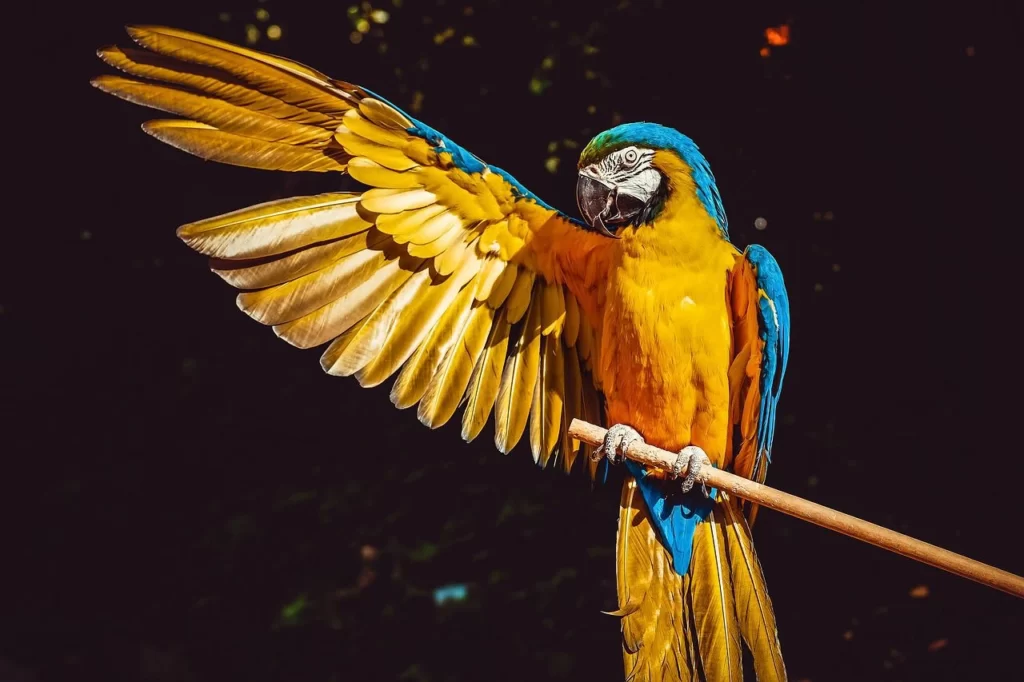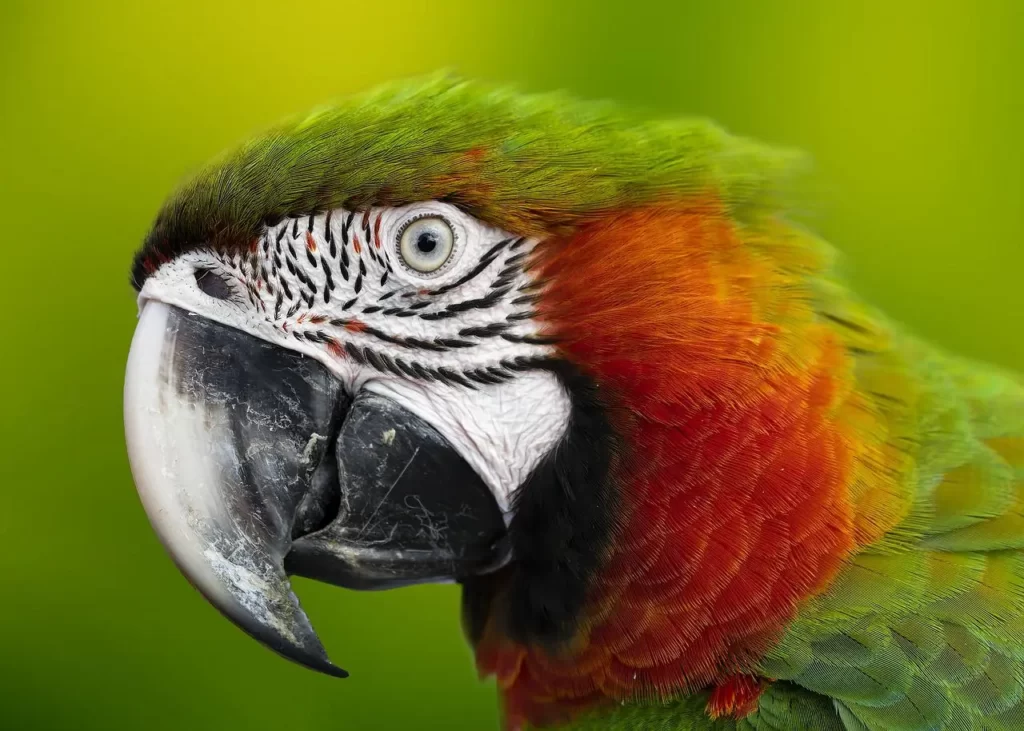The macaw is a bird of the order “Psittaciformes”, recognized for its beak and beautiful feathers with a variety of bright colors.
The macaw is a bird belonging to the order of the “Psittaciformes”, the family of parrots, parakeets, and related forms.
It is recognized for its beak and beautiful feathers with a variety of mixed colors that highlight green, yellow, blue, and red tones.
It inhabits the tropical regions of South America, flying through the skies of countries such as Bolivia, Honduras, Mexico, Brazil, Peru, Colombia, and Venezuela.
In ancient times, the Maya culture associated it with the power of the sun and fire. Today, it is considered a jewel of wildlife.
In addition, it has impressive qualities such as the ability to imitate the human voice and other sounds, as well as communicate among themselves with sharp shrieks over long distances.
Do you want to know more about this fascinating bird?
Don’t miss this article and discover its characteristics, how many species exist, what it eats, how it reproduces, if it is at risk of extinction… Go ahead!
What is a macaw?
It is a bird of the order “Psittaciformes” characterized by its large size, a hook-shaped beak, short legs, long tail, and colorful plumage.
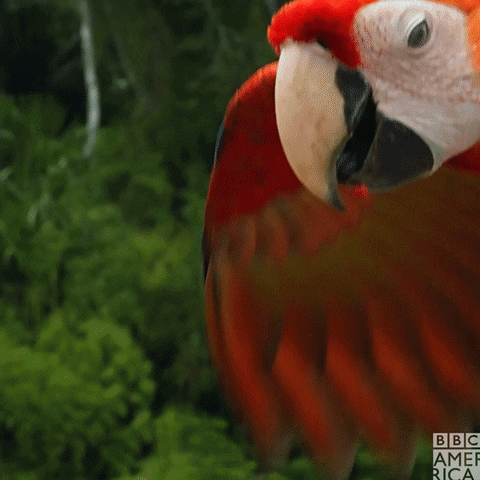
Characteristics of the Macaw
- Its body is robust.
- It has a skeleton made of flexible and hollow bones, designed for flight.
- It has bright plumage that varies between shades of green, yellow, red, blue, orange…
- Some species have feathers on their face; others have a featherless face or exhibit wide spaces in rows of short feathers.
- Its beak is large, hook-shaped, and consists of a downward curvature in the upper jaw and an upward curvature in the lower jaw.
- The color of the beak varies between white with black spots and black.
- The upper jaw is larger, mobile, and connected to the skull.
- The tongue is dry and rough, usually black in color; it has a bone inside and is prehensile (useful for holding).
- The eyes are located on the sides of the head; the cornea is visible, and the color of the iris (colored part of the eye) varies according to the species between yellow, orange, and black tones.
- It has a short neck.
- The wings are thick, and when extended, they can measure more than a meter between their tips (wingspan).
- The legs are short; their color varies from dark gray to black and consists of two toes forward and two backward (zygodactyl) with external nails.
- The tail is long (usually longer than the body), and its feathers extend to the sides when flying.
- Its average weight varies between 1 and 2 kilograms, and the length of its body between 30 centimeters and 1 meter.
What are the abilities of the macaw?
Scientific studies indicate that the macaw is a very intelligent and curious bird; it can not only imitate sounds but is also capable of communicating with its species, using tools, and even solving problems.
Despite not having vocal cords, it emits shrieks (screams) in high and low tones that travel many kilometers to communicate with its group.
In addition, it is capable of repeating more than 30 words! How is this possible?
In 2016, Brazilian Susana Herculano, a brain anatomist, and a team of researchers discovered that this is because macaws have a greater number of neurons in the area associated with intelligent behavior. Fascinating!
Did you know...? At the Beauval Zoo in France, research is being conducted on 'Ara ararauna' macaws, as scientists have observed that the coloration of their face varies and they blush when they feel comfortable. Click To TweetHow are macaws classified?
Macaws belong to the Order “Psittaciformes”, Family “Psittacidae”, Subfamily “Arinae”, Tribe “Arini”, characterized by including long-tailed species that inhabit the tropical region of the American continent.
This tribe is divided into several genera, among which stand out:
- “Ara”, the most well-known.
- “Anodorhynchus”, whose species are characterized by their blue plumage.
- “Cyanopsitta”, with a single specimen called “Spix’s macaw”.
- “Orthopsittaca” or red-bellied macaw and
- “Primolius”, composed of three species.
Currently, there are 17 living species.
Common names of the macaw
- Flag Macaw.
- Blue and Yellow Macaw.
- Dwarf Macaw.
- Green-winged Macaw.
- Military Macaw.
- Seven-colored Macaw.
- Chestnut-fronted Macaw.
- Arará.
- Guadeloupe Macaw.
- Hyacinth Macaw.
- Red Papagayo.
- Blue-throated Macaw.
- Red-fronted Macaw.
- Brown-fronted Macaw.
- Golden-collared Macaw.
- Spix’s Macaw.
Types of Macaws
Species of the Genus “Ara”
“Ara militaris” or Military Macaw
Inhabits tropical and subtropical regions from northern Mexico to South America; it is characterized by dark green coloration, with a scarlet red crown on its head and wings and tail with blue tips.
It includes three subspecies: “Ara militaris mexicana” in Mexico, “Ara militaris boliviana” restricted to southern Bolivia and northern Argentina, and “Ara militaris militaris” in Venezuela, Colombia, Ecuador, and northern Peru.
“Ara ararauna” or Blue and Yellow Macaw
Distributed from Panama to northeastern Argentina, its name derives from the combination of its blue plumage on the top and yellow on the belly and chest; it is one of the most well-known macaws.
“Ara ambiguus” or Great Green Macaw
Also known as the Buffon’s Macaw or Ambiguous Macaw, it exhibits a characteristic lime green color, which mixes with turquoise blue shades in the feathers and scarlet red on the forehead and tail.
It has two subspecies: “Ara ambiguus ambiguus” in the jungles of Central America and “Ara ambiguus guayaquilensis” in Ecuador.
“Ara macao” or Scarlet Macaw
Also known as the Red Macaw or Flag Macaw, it stands out for the spectacular nature of its plumage, mixing yellow, blue, and scarlet red colors.
There are two recognized subspecies: “Ara macao cyanopterus” characteristic of Mexico and Central America and “Ara macao macao” in South America. It is one of the largest species and the national bird of Honduras.
Did you know...? The 'Ara macao' macaw can live in captivity between 75 and 100 years. Click To Tweet“Ara chloropterus” or Green-winged Macaw
Inhabits the tropical jungles of South America; its body and head are red, with wings that display blue and green hues, and unique red stripes on the face.
Species from Other Genera
“Anodorhynchus hyacinthinus” or Hyacinth Macaw
Also known as the Blue Arara, it lives in Brazil, Bolivia, and Paraguay.
It is the largest macaw in the world, measuring over one meter in length, and has a spectacular blue plumage combined with a yellow edge around its eyes and beak.
Did you know...? The Hyacinth Macaw's beak is so strong that it can break a coconut shell. Click To Tweet“Cyanopsitta spixii” or Spix’s Macaw
It is the only species of the genus “Cyanopsitta”; inhabits Brazil and is probably known to you as the protagonist of Disney’s movie “Rio” (“Blu” and “Jewel”).
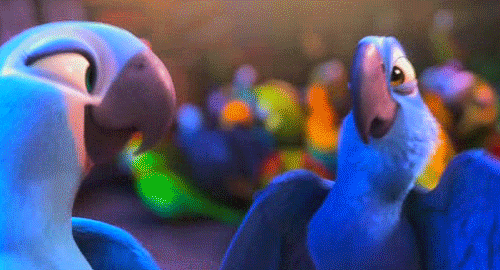
It has striking plumage combining shades of blue and a large black beak.
“Orthopsittaca manilatus” or Red-bellied Macaw
Also known as the Red-chested Macaw, it represents the only species of the “Orthopsittaca” genus and is found in Colombia, Bolivia, Peru, Brazil, Venezuela, Guyana, Suriname, and Trinidad and Tobago.
It is distinguished by its red-plumaged belly and a radiant blue forehead and crown, which blend with greenish hues.
“Primolius auricollis” or Golden-collared Macaw
This species inhabits Brazil, Paraguay, Bolivia, and Argentina, featuring greenish plumage, a black crown, and a distinctive yellow collar at the top of the neck, intermingling with blue tones in the wings and tail tip.
Did you know? As it ages, the yellow collar of the 'primolius auricollis' macaw becomes more vibrant. Click To TweetHybrid Macaws
There are other species of macaws called “hybrids” as they are the product of mixing or crossing different species, either within the same genus or different ones.
If species from the same genus are crossed, the offspring tend to be fertile, but if they are from different genera (for example, Ara and Anodorhynchus), the resulting species are infertile, meaning they cannot produce offspring.
The topic of hybridization remains debated, as for many it can alter the “pure” bloodlines of the parent macaw species.
Despite the controversy and evidence for or against, so far, hybrid macaws are considered healthy birds.
Among these hybrid species are:
- “Bluffon Macaw” (Ara ambiguus + Ara ararauna).
- “Calico Macaw” (Ara militaris + Ara chloropterus).
- “Caloshua Macaw” (Anodorhynchus hyacinthinus + Ara ararauna).
- “Catalina Macaw” (Ara militaris + Ara ararauna).
- “Harlequin Macaw” (Ara chloropterus + Ara ararauna).
- “Maui Sunset Macaw” (Ara rubrogenys + Ara ararauna).
- “Milifons Macaw” (Ara militaris + Ara ambiguus).
- “Ruby Macaw” (Ara chloropterus + Ara macao).
- “Hyacao Macaw” (Ara macao + Anodorhynchus hyacinthinus).
- “Santa Fe Macaw” (Primolius maracana + Primolius auricollis).
What is the habitat of the macaw?
They inhabit the tropical regions of South America, in countries like Bolivia, Honduras, Ecuador, Mexico, Peru, Venezuela, and Colombia, in tropical forests, jungles, and plains near rivers and streams.
Their geographical distribution is determined by the availability of food resources and nesting sites.
They are associated with rocky walls, nesting in high vertical walls devoid of vegetation located in canyons or deep valleys.
Did you know? The bright colors of macaw feathers help them camouflage with the colorful landscape of the tropical jungle, and they can have more than 15,000 feathers! Click To TweetHow do macaws live?
Macaws are gregarious birds, meaning they enjoy living in groups, either in pairs, family units of 3 to 4 individuals, or colonies of between 25 and 50 individuals.
They have diurnal habits and are very active; they move daily, flying in flocks over the treetops and covering great distances in search of food.
Within the colony, there is a certain hierarchy, with adult males being the highest-ranking individuals and thus dominant within the group.
Did you know? Macaws can reach a speed of 35 miles per hour. Click To TweetWhat do macaws eat?
Macaws are primarily granivorous, meaning their main diet consists of plant seeds; they also consume fruits, nuts, nectar, shoots, leaves, flowers, and occasionally insects and snails.
Some species consume soil or clay (geophagy) at sites called “licks” along riverbanks; scientists believe this helps neutralize any toxic substances they may ingest from seeds or unripe fruits.
To feed, they use their foot (usually the left) to hold food, taste it with their tongue, and then use their strong curved beak to break the seed before ingesting it.
How do macaws reproduce?
Macaws reproduce sexually and this occurs every one or two years.
The breeding season varies depending on the region where they live and depends on food availability, which is affected by temperature and rainfall patterns.
The male initiates courtship with a dance that includes movements of his legs, head, and tail, displaying his dilated pupils and extending his wings to show off his colorful plumage.
Upon winning the female, he will join his cloaca (genital orifice) with hers to ejaculate or expel semen and fertilize her.
The formation of the pair is for life! They fly together, share food, and preen each other.
For nesting, they usually take advantage of cavities made by other birds in cliffs and large-diameter tree trunks; the nesting cliffs are bare walls, generally with a 90° slope and a height of 50 to 455 meters.
Outside the breeding season, these spaces are used as roosts.
The female lays one to three spherical, white, and shiny eggs; the incubation period lasts 26 to 28 days, during which the female stays near the nest while the male forages for food.
How is the chick’s development?
After the incubation period, the chick hatches with closed eyes, a clear beak, no plumage, pink in color, and weighing approximately 25 to 27 grams.
In the following stages of development, both parents take care of the chick; the male feeds them by regurgitation (expelling partially digested food from the mouth) with vegetables, and they tend to be very protective, so they can behave aggressively.
Around four weeks, the chick opens its eyes, the beak darkens, and the bases of the wing feathers begin to appear. At ten weeks, the chick is fully feathered, and in six months has completed its growth.
At one year, it is ready to leave the nest and become independent, reaching the adult or sexual maturity stage between three and four years of age.
Did you know? Macaws groom each other and their chicks for hours, cleaning insects from their feathers. Click To Tweet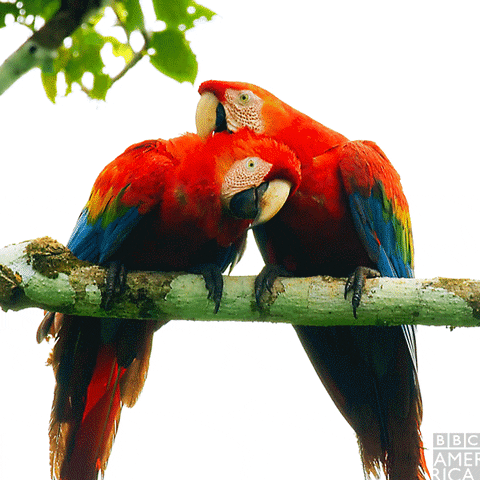
Is the macaw endangered?
Human activities have caused rapid degradation, reduction, or loss of natural ecosystems, and as a result, the macaw’s habitat has been gradually disappearing, even within protected areas.
This situation, coupled with the illegal trade of birds for pets and the creation of headdresses and ornaments, are the main threats to this beautiful bird.
According to the International Union for Conservation of Nature (IUCN) Red List of Threatened Species, many macaw species are at risk of extinction.
The Hyacinth Macaw, the Spix’s Macaw, the Military Macaw, the Blue-throated Macaw, the Red-fronted Macaw, and the Great Green Macaw are some of them, and the chances of their disappearance are increasing every day.
The Hyacinth Macaw, for example, is listed as “Vulnerable”; the Spix’s Macaw was described as “Extinct in the Wild”, meaning only specimens in captivity existed.
Thanks to the efforts of various organizations, captive breeding of this species and reintroduction into their natural habitat have been achieved, in places like Brazil and Paraguay. However, it is still listed as “Critically Endangered”.
On the other hand, the Military Macaw is classified as “Vulnerable”, while the Blue-throated Macaw falls under “Critically Endangered”, just like the Red-fronted Macaw.
Also, both species of the Great Green Macaw: “Ara ambiguus ambiguus” and “Ara ambiguus guayaquilensis”, are “Endangered” and “Critically Endangered”, respectively.
Many other species, such as the scarlet macaw, are also at risk of extinction, despite being classified as of “least concern” according to their conservation status.
If you wish to learn about other endangered animals, I recommend visiting websites about endangered animals.
Did you know…? Many people pay large sums of money to get an exotic bird in their hands; the price of a Hyacinth Macaw specimen is sold for approximately 15,000 euros. Click To TweetWhat species of macaws have disappeared?
Specialized researchers point out that there are about 13 extinct species of macaws, mainly from the genus “Ara”, due to hunting, deforestation, and the introduction of foreign species.
Some of them are:
- “Ara tricolor” (Cuban macaw).
- “Ara gossei” (Jamaican red macaw).
- “Ara atwoodi” (Dominica macaw).
- “Ara guadeloupensis” (Guadeloupe macaw).
- “Ara rouge” (Hispaniolan macaw).
- “Ara erythrocephala” (Jamaican green-yellow macaw).
- “Ara martinica” (Martinique macaw).
- “Ara autocthones” (Saint Croix macaw).
- “Anodorhynchus glaucus” (glaucous macaw); possibly extinct, as no evidence of living populations has been found in recent years.
Cultural importance
Throughout history, humans have always been fascinated by the beauty of the macaw’s plumage.
In pre-Hispanic thought, this bird occupied a prominent place and was an object of veneration in Mexican civilizations such as the Mayans, Zapotecs, and Teotihuacans.
Related to the sun, water, and fire, the macaw was a symbol of life, movement, temporality, and fertility, and is represented in numerous murals, ceramics, and sculptures of the pre-Columbian era.
Particularly for the Mayans, the yellow color of the plumage of “the scarlet macaw” symbolized the sun deity, blue the sky, and red all the power of the sun’s rays that illuminated the Earth.
Currently, this species is the national bird of Honduras, commonly called Guara Roja, declared as such on June 28, 1993, under Legislative Decree No. 36, and was selected as the mascot (“Guaki”) of the 2007 Copa America, held in Venezuela.
Macaw | Characteristics, Classification, Types, Habitat, Diet, and Reproduction Click To TweetReferences
Bertó, A. (2017). Hybrid Macaws (Part I). Infoexóticos. https://bit.ly/3aeEu8P
BirdLife International. (2020). Ara militaris. The IUCN Red List of Threatened Species 2020: e.T22685548A179407584. https://doi.org/10.2305/iucn.uk.2020-3.rlts.t22685548a179407584.en
Mendoza-Cruz, E., Sánchez-Gutiérrez, F., & Valdez-Hernández, J. (2017). Activity of the Scarlet Macaw Ara macao cyanoptera (Psittaciformes: Psittacidae) and Structural Characteristics of its Habitat in Marqués de Comillas, Chiapas. Acta Zoologica Mexicana, 33(2), 169-180. https://doi.org/10.21829/azm.2017.3321058
Olkowicz, S., Kocourek, L., Porteš, F., Herculano-Houzel, S., & Němec, P. (2016). Birds have primate-like numbers of neurons in the forebrain. Proc Natl Acad Sci USA; 113(26):7255-60. https://doi.org/10.1073/pnas.1517131113
IUCN. 2021. The IUCN Red List of Threatened Species. Version 2021-3. https://bit.ly/3OhKiwF


